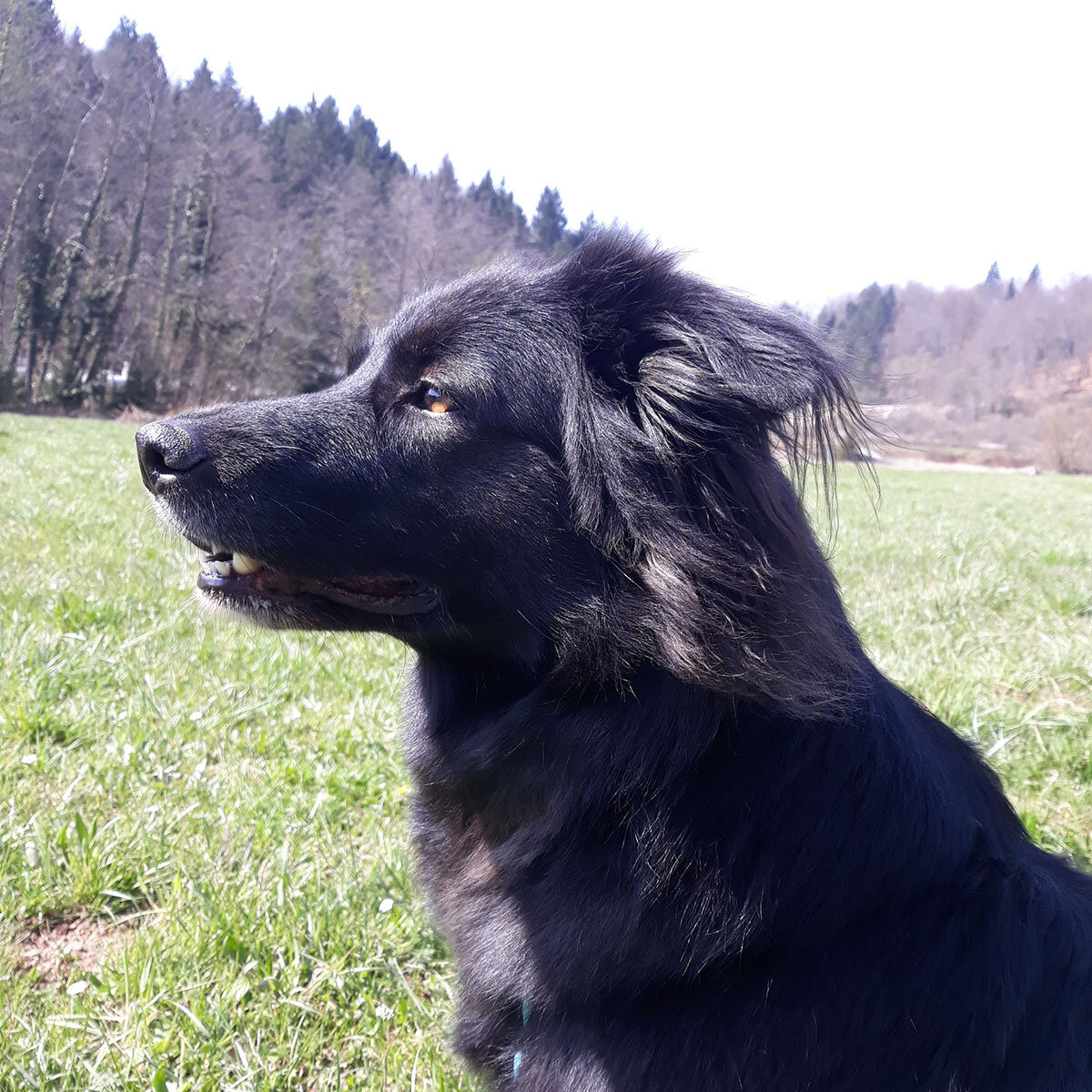Can “reactive” dogs have Smiling Leash walks?
The answer is YES, reactive dogs absolutely can and should have Smiling Leash walks.
We know it can be hard to imagine your barking, snarling and lunging fourlegged friend strolling peacefully on a loose leash, but it can be done and the benefits are immense.
Pictured above is Šar, a five year old mixed-breed male that was adopted from a shelter in late 2018. Šar is as charming as he is sensitive and his humans use the guidelines in this post to create Smiling Leash moments for him.
A little while ago we wrote about the emotional side of living with a reactive dog, and this time we will look at the practical aspect. This advice applies to most dogs, but we strongly suggest you find a good ethical trainer to help you on your way. We can recommend many great experts that are part of the organisation PDTE Pet Dog Trainers of Europe (as are we) - you can find them here.
So, how do we go about creating Smiling Leash moments for your reactive dog?
HOW TO PREPARE
LOOK FOR REASONS
Reactive behaviour basically comes from stress: fear, frustration, overexcitement or a combination of these. For the behaviour to lessen or dissapear, we need to first remove the cause. Think about what may cause stress in your dog's life and make some changes. Make sure your dog's needs are being met and take care of any health problems - they are a common cause of behavioral issues. Consulting with a dog behaviour expert at this stage is a good course of action.
GOOD EQUIPMENT IS A MUST
A dog who is comfortable has a better chance of handling life's challenges well. Remove any chance of pain and health issues by using a good H-harness and long leash. More on that here:
PRACTICE MAKES PERMANENT
When a dog repeats a behaviour often, the behaviour strengthens and becomes more automatic. If it is a beneficial behaviour, this is a good thing. But if we are talking about reactive behavours like barking and lunging, we want to avoid the possibility of the dog practising the behaviour as much as possible. The next suggestions will show you how to do that during walks.
TIPS FOR THE WALK
QUALITY OVER QUANTITY
Dogs do not need a very long walk every day. In fact, if walks are the thing that is making your dog stressed, taking a break from them for some time can be a good first step. When you do take walks, think quality over quantity. A good, relaxed and pleasant 20-minute walk without any stressful incidents is much better than a 60-minute walk full of reactive outbursts that leaves you both nervous and overtired. Reactive dogs can get tired quite easily and when they do, coping with challenges is even more difficult for them.
LOCATION, LOCATION, LOCATION
We want to avoid the things that are making your dog react - other dogs, people, vehicles, wildlife and so on. The list of triggers is different for each dog. When going on a walk, choose a place where you are least likely to encounter triggers. It is usually better to walk in open spaces where you can spot and avoid things early on. We don't want to turn a corner on a narrow path and come face to face with our dog's biggest fear!
LET TIME BE ON YOUR SIDE
You can also avoid triggers by choosing a time when not many dogs/people/bikes ... are around. This might mean waking up early in the morning or going out late in the evening. It takes some effort, but you and your dog will be rewarded with a lovely leisurly stroll on a smiling leash.
BARRIERS ARE YOUR BEST FRIENDS
Many dogs can cope with the smell or sound of a trigger (i.e. a dog barking), but react as soon as they see the same trigger. They are visual beings after all. You can use this knowledge to avoid reactions. When you spot a trigger, try to calmly put something between it and your dog. Step behind a bush, a parked car or another visual barrier. Even if your dog knows there is a trigger nearby, it will be easier for her to cope when she is not looking at it.
A little planning goes a long way in making sure you and your dog get to enjoy pleasant Smiling Leash walks - which are in themselves a way of decreasing stress. Some of these things take extra effort on your part, but they will help create conditions for change in your dog's behaviour.
In some cases, this kind of management alone is enough for reactive behaviour to wane and dissapear, and in others, it is a crucial first step in learning new patterns of behaviour.
For most pet parents, waking up at ungodly hours, looking for secluded spots and hiding behind bushes are temporary. And even if it takes some time, you walk away with funny stories and amazing ninja skills.



